Sedums & Sedges Part 2: All About Sedges
Sedums and sedges are great options for gardeners who are looking for low-maintenance plants for their gardens.
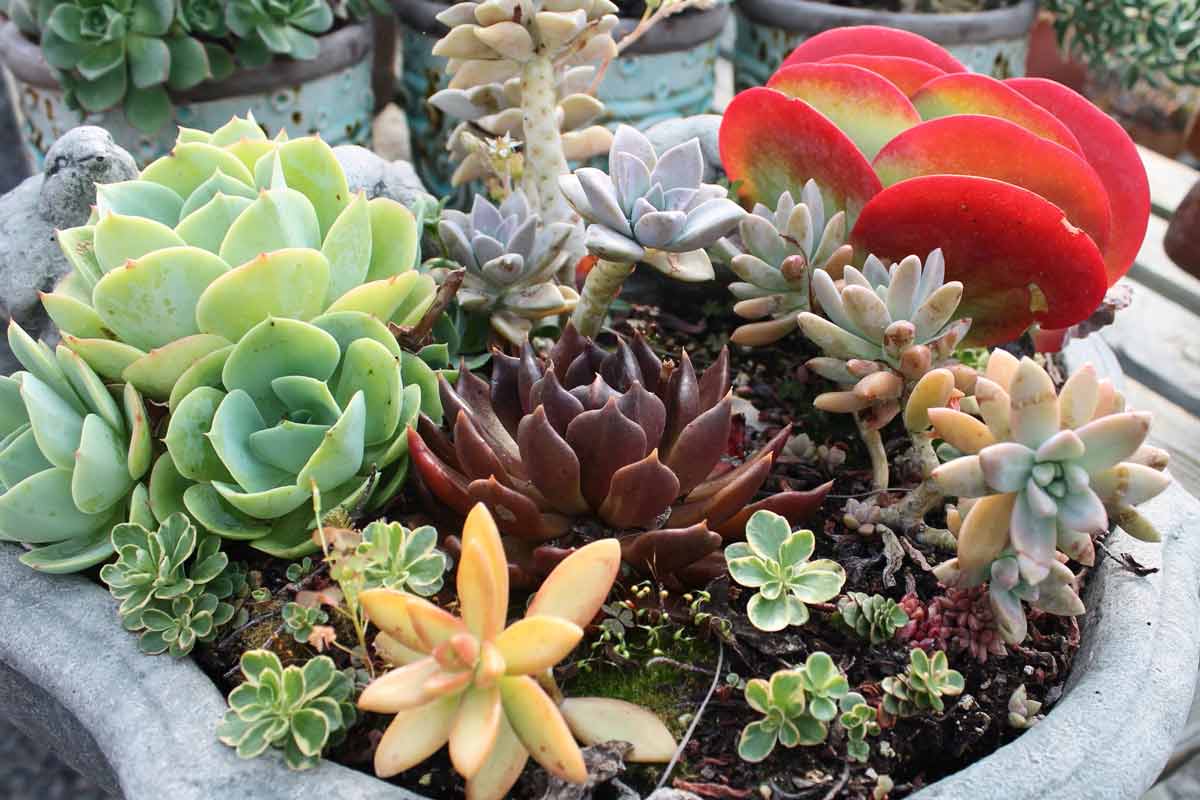
Succulents come in many forms and colors. George Weigel
Succulents – those thick-leafed plants best known for going long periods without water – are the darlings of the plant world lately, and for good reason.
In addition to their low water needs, succulents have many other favorable traits: they’re seldom troubled by bugs or disease, they are hardly ever a target of deer and rodents, and they come in a wide range of colors and forms.
The main thing to consider when buying succulents is whether they’re winter-hardy or not.
The majority of succulents are tropicals or sub-tropicals. These succulents will die in freezing weather, but you can still buy them in cold climates, they will just need to go inside over winter or be bought anew each spring.
Cold-hardy succulents, such as hens and chicks and most sedums, can be grown outside all year, even in climates that dip below zero degrees.
How can you tell whether a succulent is cold-hardy or not? Pay attention to where it’s sold in the garden center. Hardy ones are usually sold in the perennials section, while tender ones are sold with the houseplants or annual flowers. Plant tags also list the USDA Cold Hardiness Zones, which indicate the temperature lows each plant normally can withstand.
Here are eight of the most colorful and interesting choices in both camps.
Aeonium are tender uprights that have thick, glossy leaves arranged in a rosette pattern around short, squat stems.
They come in a range of eye-grabbing colors, from the red-edged ‘Red Salad Bowl’ to the neon-gold and green ‘Sunburst’ to the jet-black ‘Swartkop.’
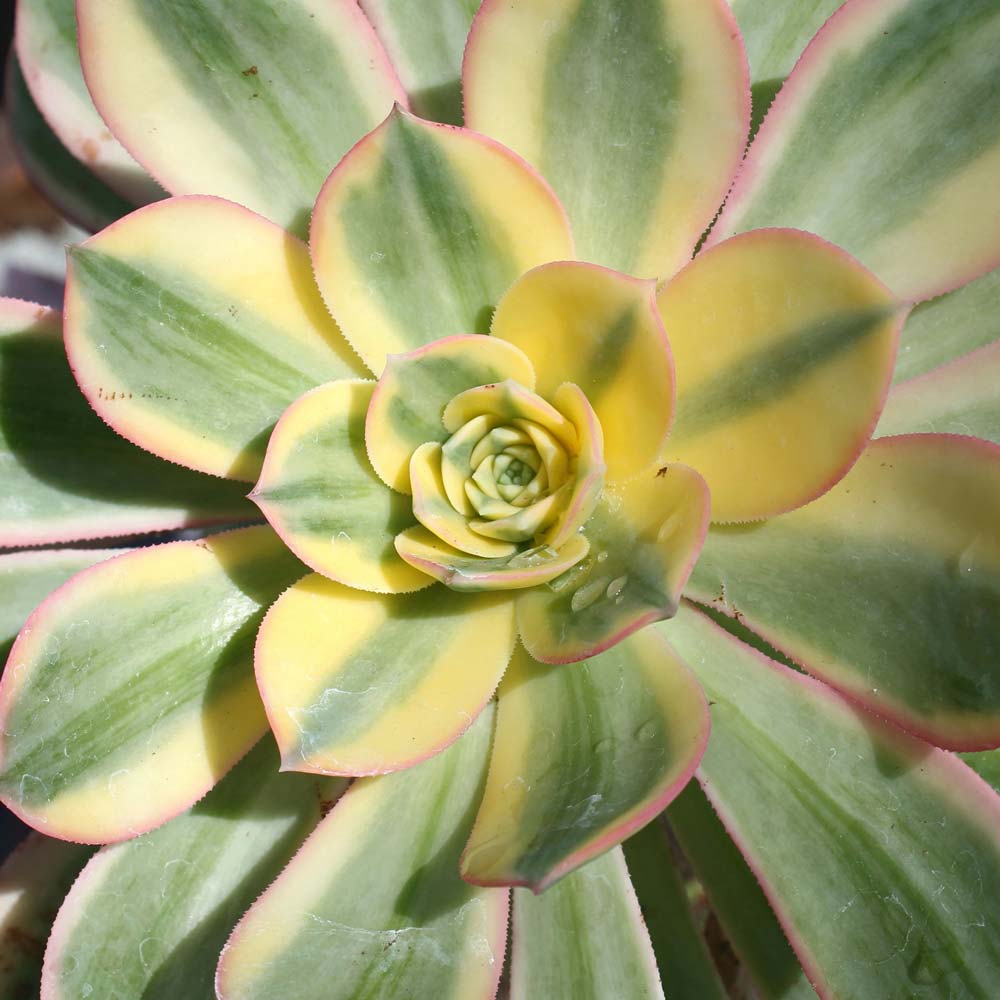
Aeonium ‘Sunburst’ has gold and green variegated leaves. George Weigel
These winter-tough, colonizing shorties come in the most dazzling array of colors – many of them bicolored. They grow only a mere four to six inches tall and are ideal in rock gardens.
The Chick Charms® series has some of the most colorful hen and chick choices, including a gold-and-red variety called Gold Nugget™ and a pair of red-tipped varieties called Mint Marvel™ and Strawberry Kiwi™.
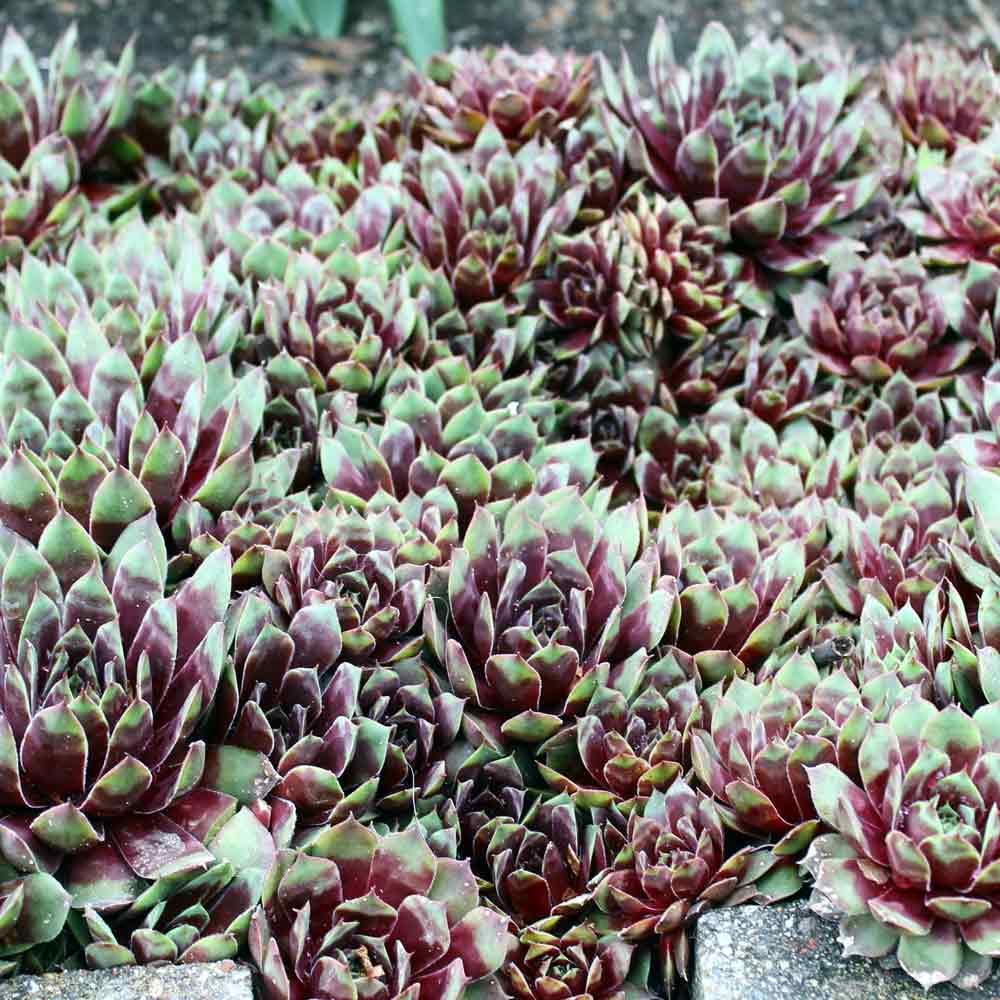
This version of hens and chicks has maroon leaves with green tips. George Weigel
Similar in looks to aeonium, echeveria are tender succulents that grow low to the ground in teacup-sized rosettes.
They also come in a range of colors which include blue-leafed ones, maroon- and nearly black-leafed ones, and a host of red, green, maroon, and pink bicolors.
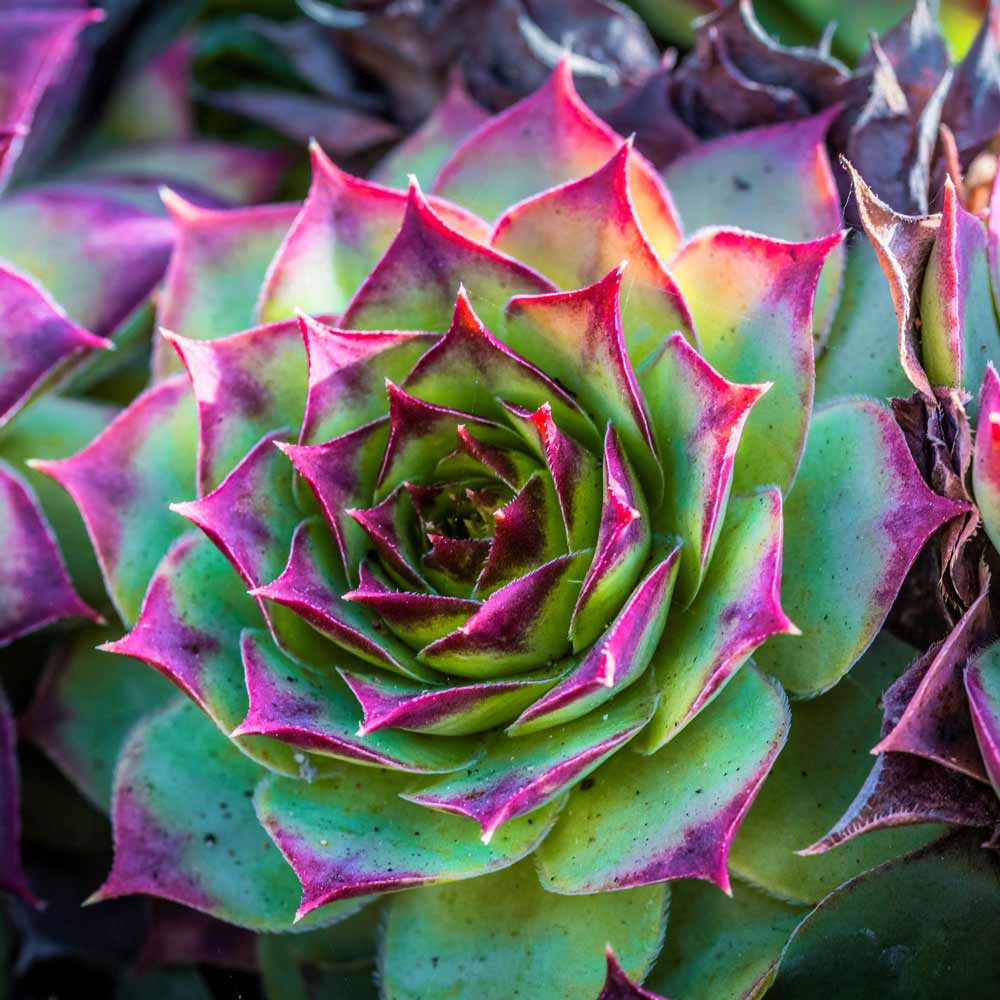
There are over 100 varieties of echeveria succulents. pluca / iStock / Getty Images Plus
Some of the most colorful choices of tender cactus are the dwarf, grafted varieties that most garden centers and home centers carry.
These grafted varieties are actually two plants sitting on top of one another, with the top variety being a colorful one, often red, pink, or yellow.
Cactus flowers are also surprisingly beautiful, while several mammillaria types look like white balls of feathery cotton.
Despite their beauty, you may want to keep your garden cactus-free if children or pets are frequenting the area. This is because most cacti have sharp spines that can do some serious harm.
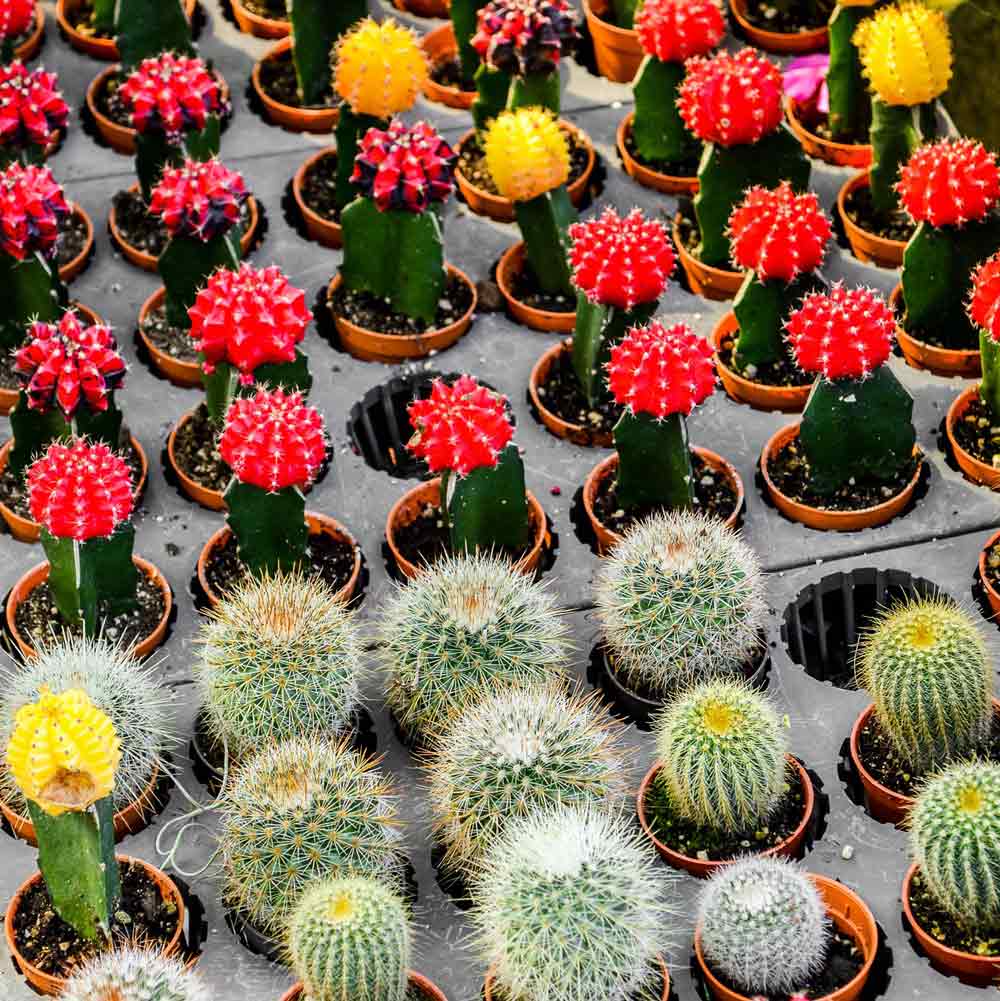
If a mutant cactus, like the red cacti in the photo, isn’t grafted onto a rootstock cactus, it will die as it can’t photosynthesize alone. mansum008 / iStock / Getty Images Plus
This tender succulent comes in a variety of looks and sizes, depending on the species, but many of them come with fat, fleshy, bright red or maroon tipped leaves.
The crassula family includes the popular jade plant, but it also features options with clusters of smaller, paddle-like, fleshy leaves that look like little vertical pancakes.
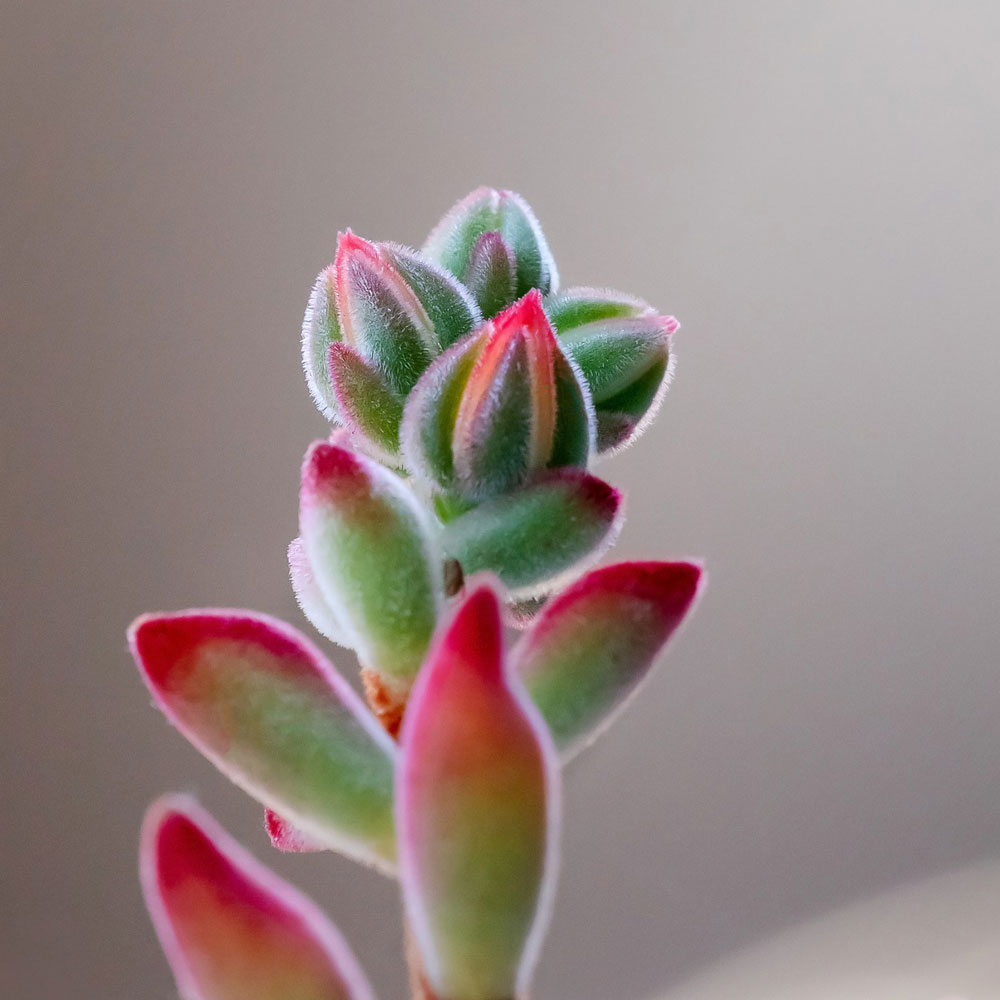
The red-tipped leaves of many crassula varieties can give a nice pop of color to any succulent garden. Gennaro Leonardi / iStock / Getty Images Plus
One cold-hardy creeping sedum that’s widely grown as a groundcover plant, especially in hot, dry garden sites is ‘Angelina’.
‘Angelina’s’ fine, fern-like foliage glows neon-gold all summer, then turns orange-red in winter before “golding” back up again the following spring. It grows only three to four inches tall and spreads to make a golden mat.
Also winter-hardy as far north as Zone 4, the SunSparkler® six-variety series of perennial creeping succulents grows only six to eight inches tall, with most varieties blooming in shades of pink during the late summer.
The real color of these six succulents, though, comes from their foliage, and it is what separates them into six different types which include:
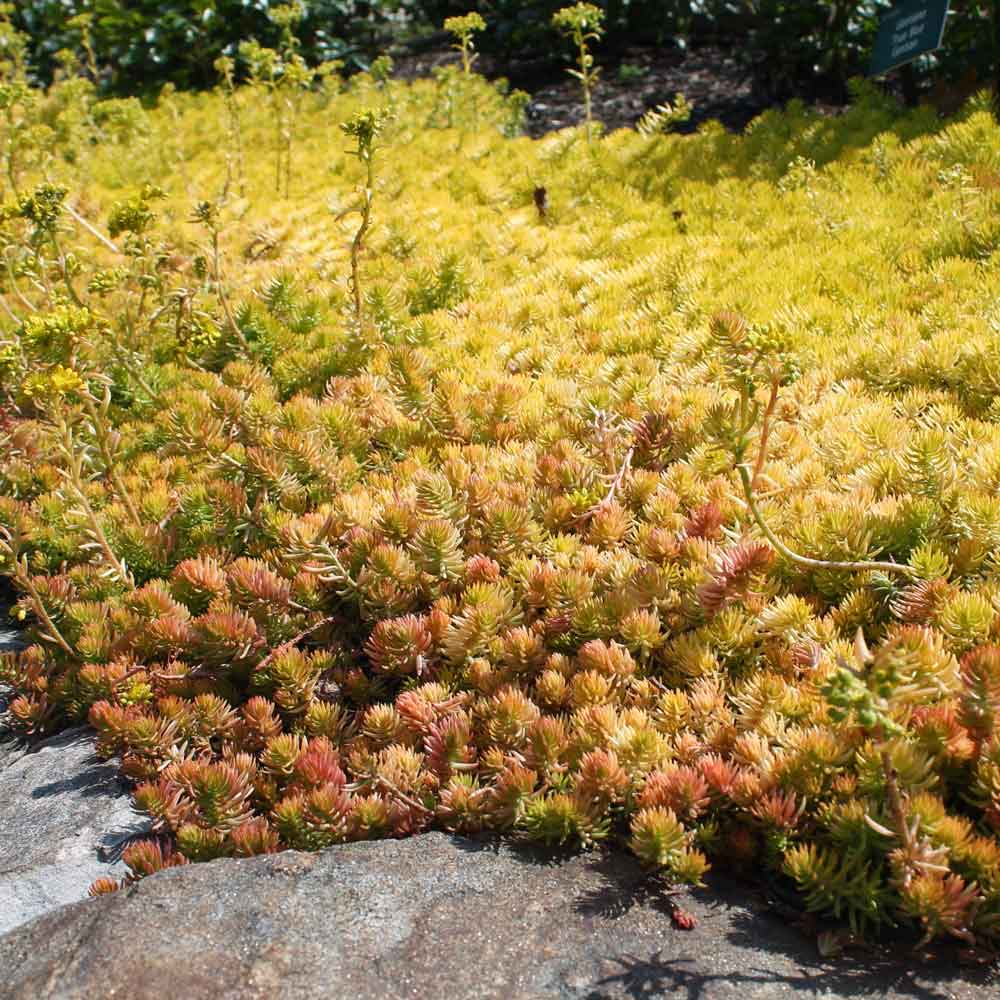
Many people wonder whether ‘Angelina’ is considered invasive, but it is simply just a fast grower. George Weigel
Commonly known as Fire Stick, ‘Sticks on Fire’, Pencil Tree, Euphorbia Tirucalli and a host of other names, this striking tall-stemmed plant is sure to add a bright pop of color to your outdoor succulent garden. Not only that, but the vertical, pencil-like stems can add height to a garden or hold its own as a potted plant.
While easy to care for and tolerant of drought, animals, and most pests and diseases, Fire Stick is only winter hardy in zones 10-12 and it is not recommended as an indoor plant.
Much like cacti, Fire Stick succulents are a beautiful addition to the succulent garden, but they may not be the plant for you. The entire Fire Stick plant is toxic to people and animals if ingested, and the milky sap found within the plant causes painful irritation to anyone that it touches. Fire Stick stems can break very easily, exposing this toxic sap, so be sure to keep the plant away from unknowing people and animals, and always wear both gloves and goggles when caring for it.
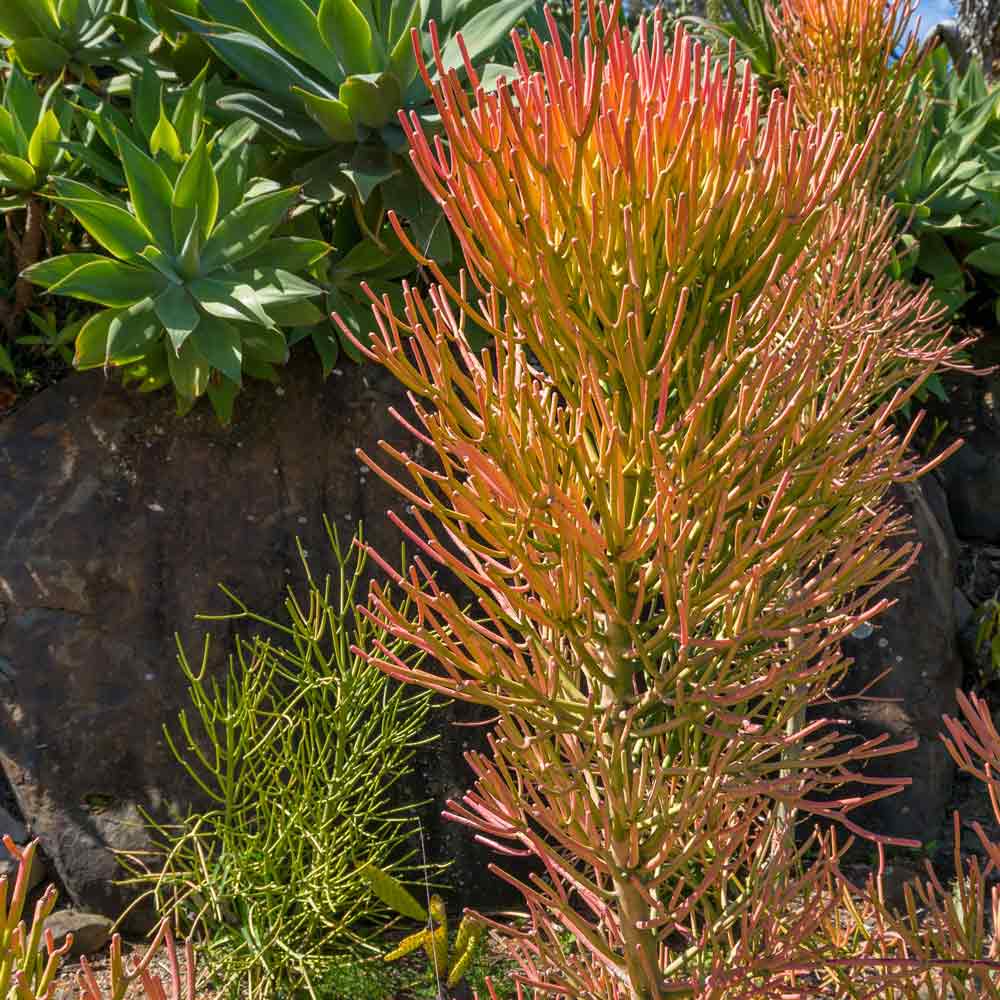
Fire Stick takes on a reddish-gold color for most of the year, before turning yellow during the summer, and then back to a red for the winter. Katharina13 / iStock / Getty Images Plus
Another tender succulent, Flapjack paddle plant is an upright that can grow a foot or more tall with leaves arranged in a curious semi-vertical stacked pattern – almost like pancakes growing in a fan-esque manner from the stems.
The “pancakes” also have brightly colored red tips.
When integrating succulents into your outdoor landscape, always be sure to know which ones may be considered dangerous if you have pets, children, or any frequent foot traffic around your planting area.
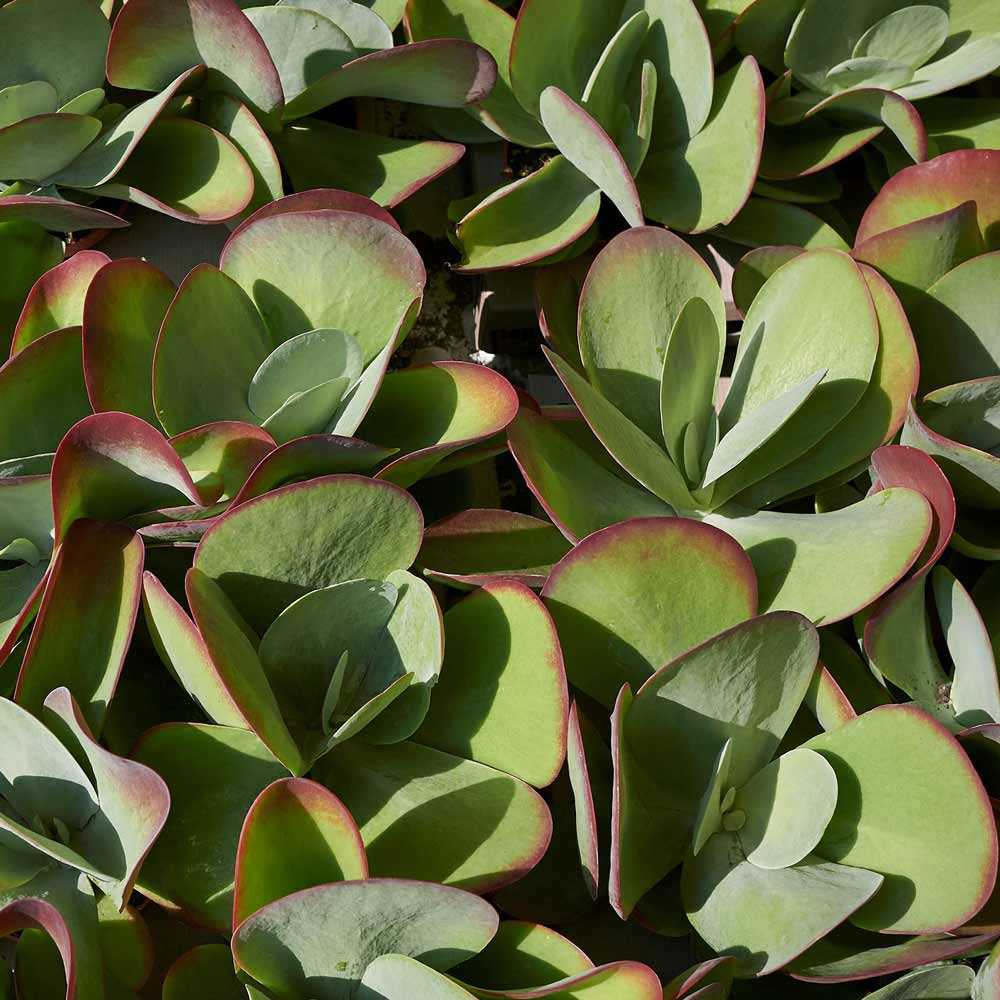
The Flapjack paddle plant is also simply known as paddle plant. seven75 / iStock / Getty Images Plus